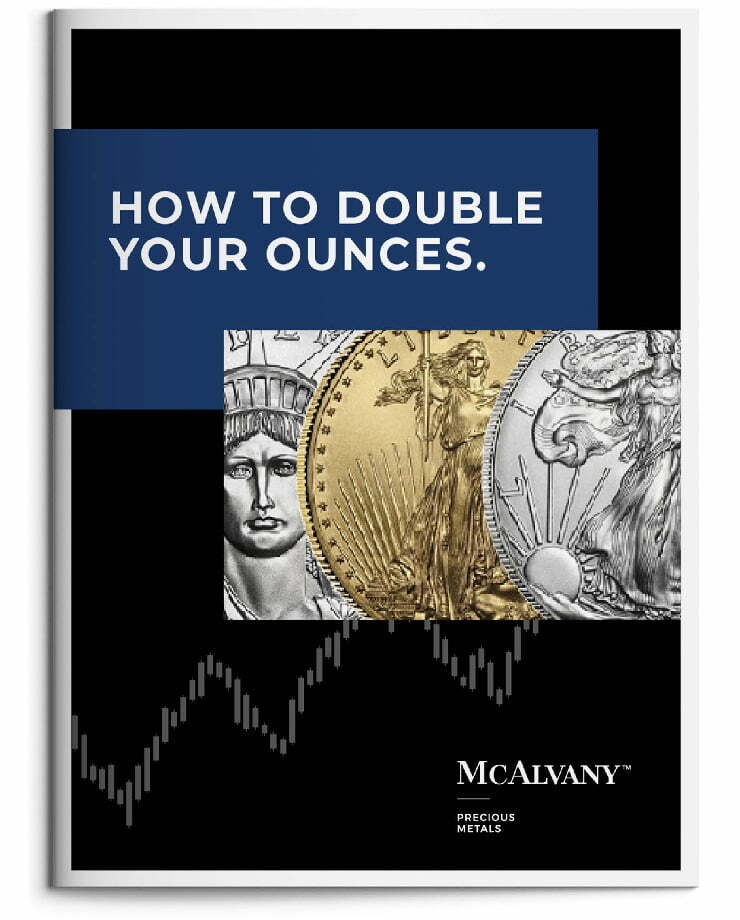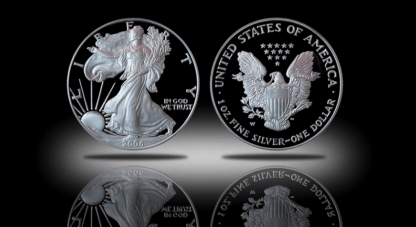If you’re a student of irony, here’s one for you: Donald Trump seems to be delivering on Barack Obama’s campaign promises—hope and change. Trump’s approval ratings reflect hope. They’re very high. But the economy’s in a period of massive change, and its metrics and Americans’ expectations for economic performance in the near term are all in the tank. Both word-related phenomena are real, but change is a not necessarily pleasant reality and hope reflects a desired possibility. It can all go terribly south from here.
The analysts whose work is reflected below cover the spectrum regarding how they view Trump’s changes. But all of them realize we’re in new territory and dealing with more variables than Carter has liver pills. When uncertainty reigns, people search for certainty to balance it.
That’s true in any element of human experience, but in the financial realm the search for certainty always ends up at the same place. It’s almost like there’s a tried and true solution for political uncertainty that has worked wonderfully for millennia (and here we hope you’re also a student and appreciator of the tongue-in-cheek). If you’re not certain what that solution is, read on.
Key Takeaways:
- Where the real action is
- Hedge funds—both powerful and sensitive
- Americans expect things to get bad
- Gold’s current strength reflects the economy’s current weakness
The McAlvany Weekly Commentary: Dollar Dangerously Near A Breakpoint
Despite all the action in the equities markets recently—together with the consequent hue and cry over economic policy—David asserts that equities markets are really just a sideshow. The real causes for concern are the dollar and the Treasury market. Why? Because they’re much, much bigger. And it’s clear from Trump administration comments that devaluation of the dollar is part of the plan. Whatever salutary effects that action might eventually have on American manufacturing and employment, it will inflict some pain in the short term—in fact, it’s doing so already. The interesting thing to note is that as people flee the equities market, they are not going into bonds as they usually do. More and more of them are going into gold. David also explains the effects of leverage on the basis trade (which he defines and differentiates from the carry trade). He considers what might happen if we are seeing a massive change in global investment flows, looking at perhaps the most likely eventuality. In such times, one might be forgiven for taking literally the advice Glinda gave Dorothy, “follow the yellow brick road.”
Credit Bubble Bulletin: Hooked on Hedge Fund Leverage
Drawing on his extensive market knowledge, Doug describes the era of bubble history inaugurated in the 1990s: “Alan Greenspan orchestrated a surreptitious banking system recapitalization that unleashed a financial revolution, a fundamental transformation of market and financial structure that I believe is now in the process of what could prove a momentous test.” The change proved a boon to hedge fund investors, which Doug describes and then relates to today’s challenging environment. Hedge fund leverage has proved both immensely profitable and highly sensitive to increases in interest rates. Holding over $6 trillion in Treasuries, hedge funds are a force to be reckoned with—but the periodic bailouts needed to keep them healthy get bigger with time. “Monstrous contemporary ‘Wall Street’ market-based finance is as inherently unstable as ever. The proliferation of leveraged speculation ensures acute fragility. And, to be sure, faith in liquidity backstops and market bailouts is absolutely fundamental to market structure. Each bailout further emboldened risk-taking and leveraging, ensuring ever larger future bailouts. The size and scope of the next round of bailouts will astound.”
Hard Asset Insights: Clarity In the Fog of War
Morgan tallies the toll being taken on both the economy and people’s expectations this week. Though both support for and approval of Trump’s actions remain high, Americans of every stripe are tightening their belts and settling in for a rough ride. They appear to be under few illusions. Looking ahead, they see inflation, reduced employment opportunities, poorer business conditions, and greater economic hardship. Pollyanna, not. But Main Street has always been able to take a punch better than Wall Street (and has taken many). Bond investors can go vigilante, the big money can usually get the Fed to issue QE and make everything better, but Main Street often has no true champion. Trump’s efforts to change that might work or not, but Morgan’s desire for the everyman to wake up and follow the big-money early adopters of gold as disruption insurance is palpable. His facts and his logic are thorough and compelling, as usual. The wise among us will surely be warned and inspired to act.
Golden Rule Radio: Short-Term Retrace, Long-Term Trend
Miles’s recap this week highlights gold’s new all-time high of $3,500. The price fell quickly from that brief summit, gaining only two percent on the week, but the high was telling. All of the analysts summarized on this blog have been warning for many months, if not years, that the need for portfolio insurance was growing. It’s no accident that the most turbulent market environment in decades is being accompanied by gold’s consistent rise in dollar price. And commensurate with that trend, the dollar’s value vis-à-vis other currencies (as reflected in the dollar index) is down—again. The message is clear, and while inquiring minds might want to know, wise minds already do. Gold is doing its time-honored thing—on a global basis, we might add, for hundreds of millions of people. The only question is whether you will allow it to do the same for you. And if you’re still on the fence, take a look at the chart Miles shows at 5:00 into the video. For those who might prefer a little bit more of an advantage, Miles talks about current opportunities in silver for ratio traders.















